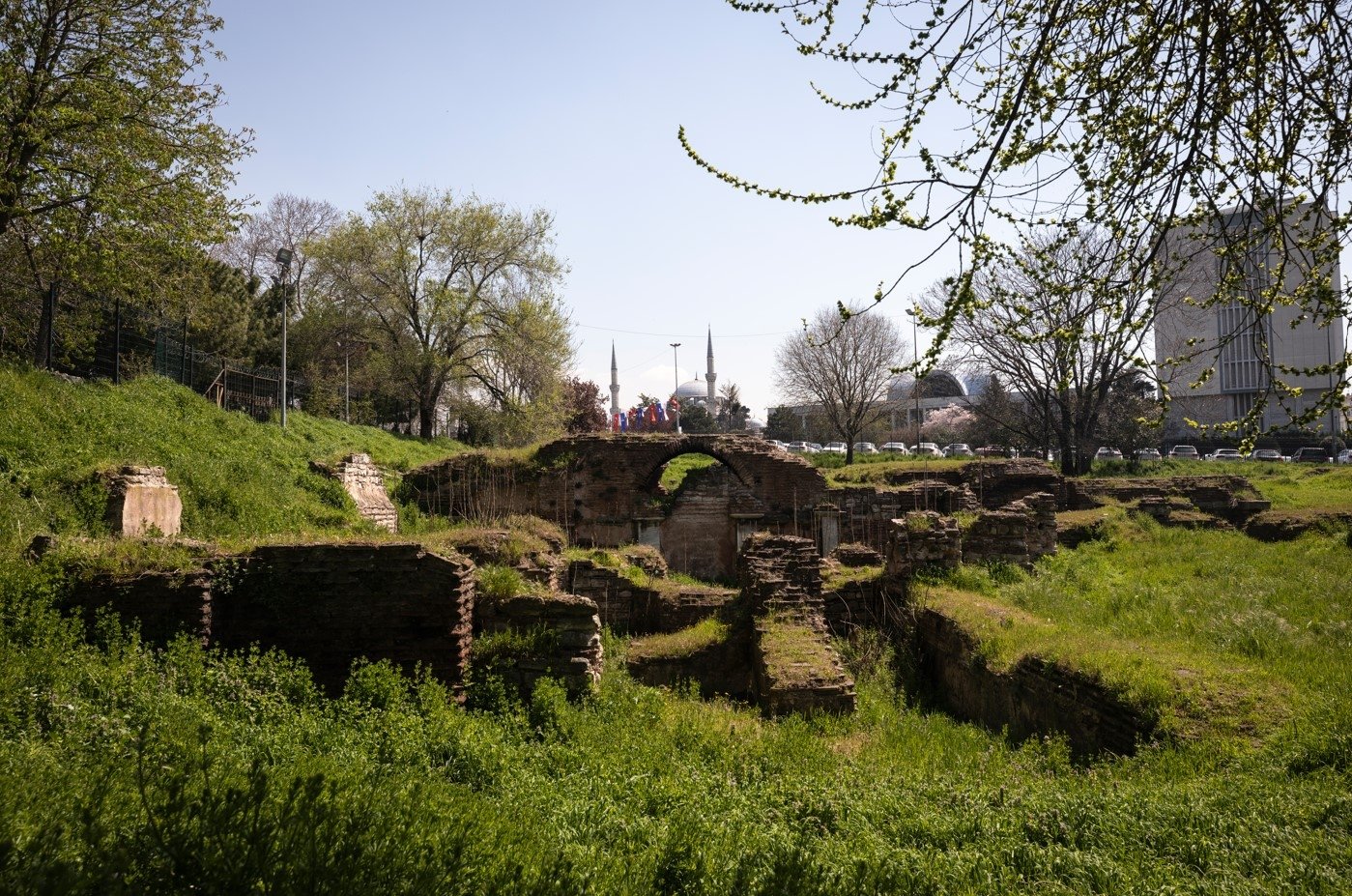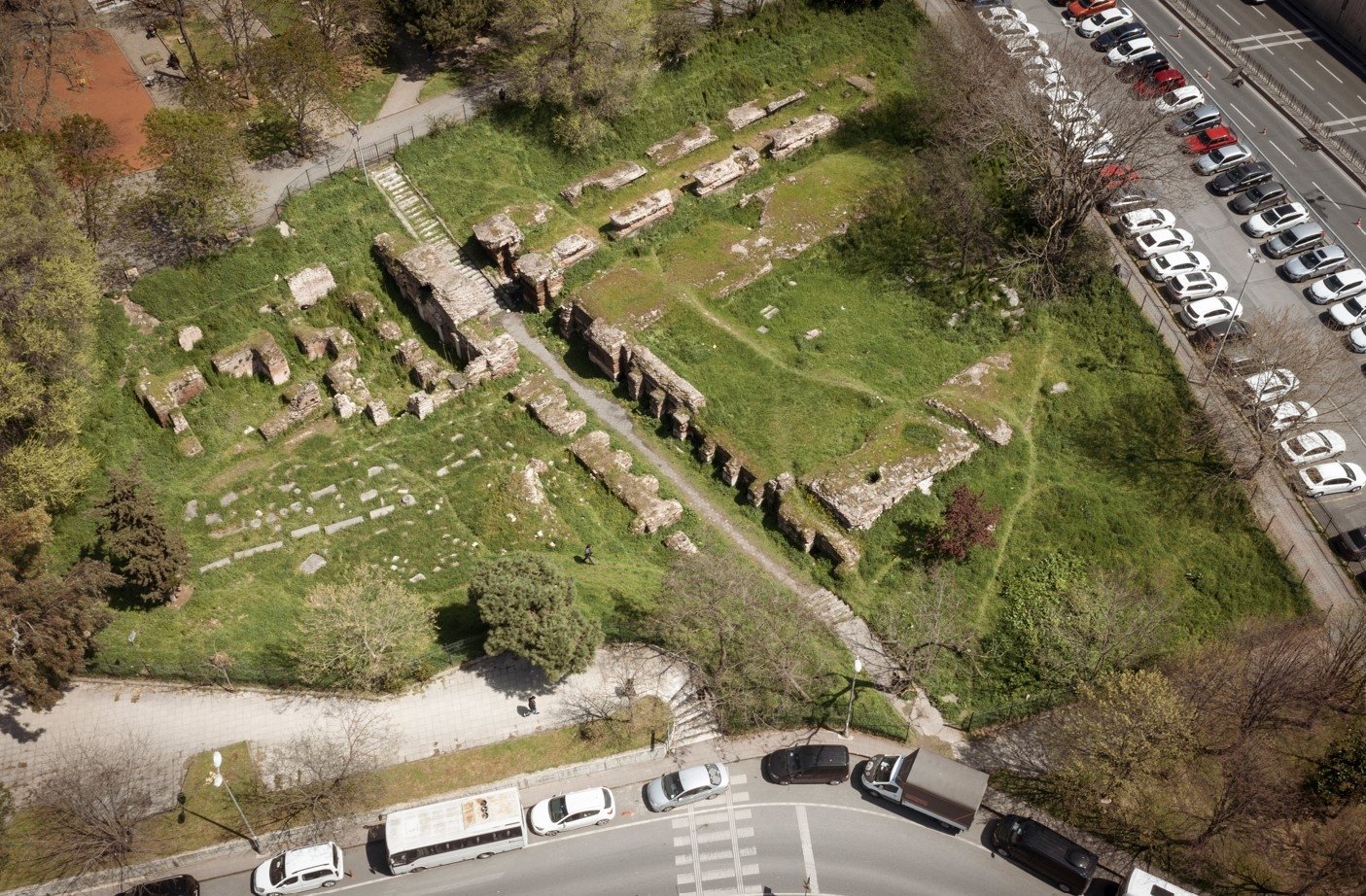© Turkuvaz Haberleşme ve Yayıncılık 2024
A statue thought to belong to the Roman period was recovered during excavation works carried out by Istanbul Metropolitan Municipality (IBB) teams at Saraçhane Archaeology Park, where the Church of St. Polyeuctus is located.
The church, built in A.D. 524 in the Saraçhane district of Istanbul, was destroyed after being used for various purposes. However, after some historical artifacts belonging to the church were discovered during the construction of an underpass in the 1960s, excavation works were carried out in the church.
After six years of hiatus, the excavation work was paced by the IBB Heritage teams affiliated with the Cultural Affairs Directorate. A statue was found approximately 1 meter deep (3 feet) in the fill on the north side of the main structure where the excavation works were conducted. It was determined that the marble statue's head, legs and right arm were broken at shoulder height. The figure, dressed in a himation that leaves the upper right part of its body uncovered, is thought to belong to the Roman period. The exact age and period of the statue will be determined after further examination.

At the excavation site, Mahir Polat, the deputy secretary general of the IBB, said: "The Polyeuktos Church's ruins will be exactly 1,500 years old soon. Yet, there were also buildings in the Roman period before the Polyeuktos Church was built on this site. After it was destroyed, there were also different buildings in the Ottoman period. This is a truly unique point for Istanbul's urban archaeology."
"We are in a collection of buildings that are almost a summary of Istanbul, which was the capital of three empires. Since June 2022, we have started intensive excavation work and re-planning of the site. This building complex represents a unique momentum in Byzantine history and subsequent periods of the world's architectural history. It was built just before the Hagia Sophia as the most magnificent example of the 'domed basilica' architectural style. We think that Hagia Sophia was built to be pit against the church," he said.

Adding that the artifact may have been dedicated to Asclepieion, the god of medicine in ancient Greece, he said: "Along with a Byzantine archaeological excavation in the field, there is actually data from pre-Byzantine Roman archaeology. Part of it had been excavated for many years, but we, as the IBB, included the northern part that was not excavated at the time," he said.
Polat also stated that the artifacts found during the excavation would be exhibited soon. "This area will be open to visitors within a month. We will start displaying the findings to the public," he added.
About the statue, Polat emphasized: "Istanbul is a place where history really springs from its soil. Think about it, a significant Roman statue can be found 1 meter below ground level after thousands of years. In this respect, with our studies, we think that this finding, a Roman-period statue, dates back to the A.D. second century. With these studies, we hope to find the lost head or other parts of the body. Istanbul will continue to gain new artifacts through urban archaeology and will establish more prestigious archaeological parks or sites."
